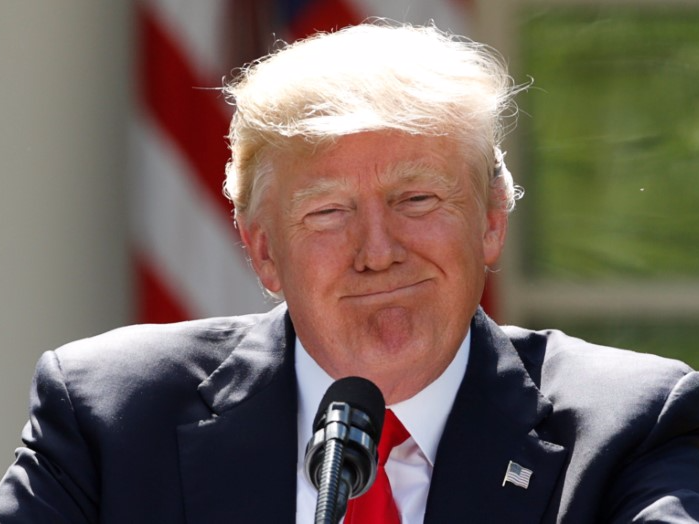August 7 marks the 200th day of President Donald Trump’s tenure.
In his first six and a half months in office, the President has promised economic prosperity and a revitalization of American industry.
And he’s boasted about his success – using the record-setting stock market, and an ongoing job-market recovery – to claim credit for energizing the U.S. economy.
Trump is right that stocks are at a record, and job creation continues. What’s wrong is the suggestion that this is reversing a decline that was in place before the new administration took office.
Business Insider took a look at how some key markets and economic indicators have responded to the new president in the first 1/8 of his term.
Stocks have risen steadily since Trump's inauguration, with the benchmark Dow Jones Industrial Average recently hitting the 22,000 mark for the first time.

Stocks have been slowly ticking up and hitting new highs on a regular basis since Inauguration Day, although they've generally moved at a somewhat slower pace than in the days immediately after the election.
Investors seem to be expecting a corporate-friendly agenda of tax cuts and deregulation, although ongoing troubles in the White House and the failure of the Republican-held Congress to pass a healthcare-reform law have taken some of the wind out of their sails.
This year's rally in stocks is part of an 8-year long bull market.

While the Dow saw a sharp upward spike in the wake of the election and healthy gains since Inauguration Day, the stock market has seen a mostly steady uptick since bottoming out in March 2009 in the wake of the financial crisis.
The US dollar has been on a downward trajectory since Trump's inauguration.

After rising quickly after the election, the dollar has seen several months of weakness and erased those gains as expectations for the US economy have faltered.
The president himself has weighed in on the dollar, telling the Wall Street Journal in April, "I think our dollar is getting too strong, and partially that's my fault because people have confidence in me."
That drop came after a big rise in the dollar starting in September of last year.

The dollar saw a particularly sharp spike in the days after the election, as investors expected pro-business policies and looser fiscal policy from the newly-elected administration to boost growth and inflation.
Consumer confidence spiked after the election, and in President Trump's first few months, but has stalled out recently.

The Conference Board's Consumer Confidence Index, as well as other surveys of how US consumers were feeling, took off after the election, largely fueled by new Republican optimism about the economy.
However, since March, those confidence measures have stalled out.
The six monthly job reports released since Trump took office have shown steady improvement in the labor market.

The unemployment rate has twice hit a post-recession low of 4.3% in May and July.
That drop in unemployment is consistent with a longer-term trend of a jobs market slowly recovering from the Great Recession.

After peaking at 10% in October 2009, the unemployment rate has steadily, if gradually, fallen to healthier levels.
Job growth has also generally been robust in the months following Trump's inauguration.

The US economy added a net 209,000 jobs in July.
As with the unemployment rate, however, job creation has fallen in line with trends in recent years.

The average monthly job growth in the first seven months of 2017 has been quite similar to that in recent years, again suggesting a steady but slow recovery in the jobs market. That is, there's no evidence that there's been a significant "Trump bump" in job creation.
One big sector Trump focused on in the campaign and his first months in office was manufacturing, which saw only modest job growth.

The 70,000 net manufacturing jobs created since Trump took office are a small fraction of the total 1,074,000 jobs added to the overall economy.
Another big theme in Trump's economic rhetoric is coal mining, which has seen virtually no job growth since he took office.

Only a net 600 jobs have been added in the first six months of the president's term.
Economic growth has also stayed in line with previous trends. The two quarters of Trump's presidency so far are marked in red.

The president and his administration have promised to spur economic growth, with a target of 3% annual GDP growth. While that rate was common in the past, since the turn of the century, growth has been closer to 2%.
Now check out Donald Trump's Twitter habits - from his favorite topics to time of day

